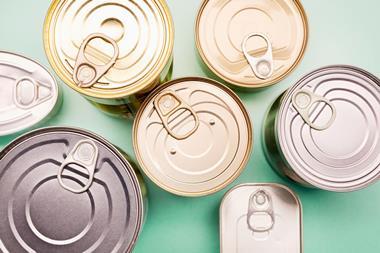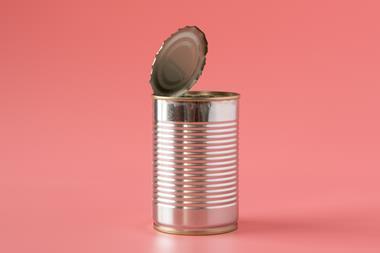Europeans are exposed to levels of the endocrine disruptor bisphenol A (BPA) that surpass acceptable health thresholds, according to new analysis released by the European Environment Agency (EEA). The levels of total urinary BPA for 92% of the adult participants from 11 European countries exceeded the European Food Safety Agency’s (EFSA) safe level of 11.5 nanograms per litre (ng/l), the EEA found.
BPA is used to make polycarbonate plastics used in food and drink storage containers, as well as epoxy resins that are used to line food and drinks cans, and has been controversial for a couple of decades as it is an endocrine disruptor. In April, the EFSA recommended a 20,000-fold reduction in the tolerable daily intake (TDI), or daily safe level of a compound over a person’s lifetime, of BPA. However, the European Medicines Agency quickly stated that there wasn’t enough evidence at this stage to warrant such a reduction and argued that EFSA’s TDI is too low. The German Federal Institute for Risk Assessment concurrently expressed similar views.
In the 11 European countries that participated in the biomonitoring initiative, BPA levels in the populace exceeded TDIs by between 71% and 100%. ‘Population exposure to BPA in Europe is therefore too high and constitutes a potential health concern,’ the EEA concluded. The agency added that, because of uncertainty in the way excess urinary BPA is measured, it is possible that BPA levels in those monitored are all above safe levels in every one of the 11 countries studied.
The urine samples were collected between 2014 and 2020, and while the newest samples still exceed the guidance value, it appears that there is a trend towards a decrease in urinary BPA levels and a slight increase in the BPA substitute bisphenol S, the EEA says. However, the agency notes that there is insufficient data right now to draw a definitive conclusion.
‘Despite two decades of significant focus from national and EU authorities and the introduction of numerous regulatory measures, biomonitoring data show that exposure to BPA is still far too high and constitutes a potential health concern,’ EEA concludes.
‘Thanks to the EU’s groundbreaking human biomonitoring research project we are able to see that bisphenol A poses a much more widespread risk to our health, than previously thought,’ stated Leena Ylä-Mononen, the EEA’s executive director. ‘We must take the results of this research seriously and take more action at EU level to limit the exposure to chemicals that pose a risk to the health of Europeans.’
The European Commission will discuss a ban on the use of BPA and other bisphenols in food contact materials by the first quarter of 2024.

















No comments yet